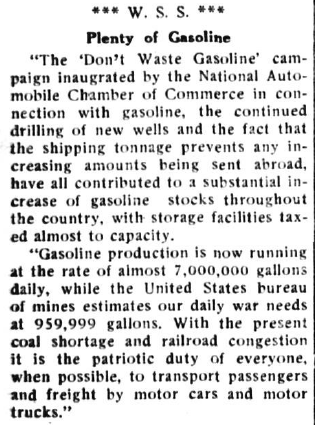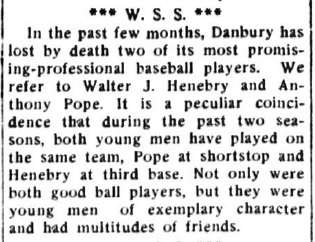Memory Monday: Current Reflections on the Spanish Flu Pandemic and First Week of March 1918
by meep
This is a “phoning it in” STUMP special: right now, I’m at a hotel in Danbury, because my house has had no power since Friday afternoon. I needed to get rested for work, and it seems to have worked. I may write about the power outage later… it looks like we may not be getting any power til Wednesday.
BUT FIRST: THE SPANISH FLU
The Spanish Flu Centennial: A Look at Influenza’s Continuing Pandemic Risk
Why 1918 still matters
Pandemics occur when an epidemic spreads widely enough to encompass the world (or at least a very large portion of it). They could also occur when a new strain of virus emerges for which people have no previous exposure. Although medical advances and population characteristics have substantially improved the ability of epidemiologists and health care providers to cope with pandemics, they can still strike with unpredictable severity.
Think of the Spanish Flu, which emerged a century ago. It was possibly the most significant pandemic in human history and an epidemiological event still unparalleled in geographic reach, infectiousness, and virulence (severity). Spanish Flu spread rapidly throughout the world, killed with remarkable swiftness, and had strong staying power. All told, an estimated 50 million people worldwide died during its unusually long 18-month cycle.
…..
Indeed, the H1N1 virus, which caused Spanish Flu, has been a factor in several large-scale influenza outbreaks — most recently in 2009’s Novel A/H1N1 Swine Flu pandemic. And H3N2, the fast-mutating culprit behind this year’s seasonal flu epidemic, is causing the current flu season to quickly approach 2009’s in population impact. Indeed, by mid-February 2018 — more than midway through the current Northern Hemisphere flu season — cases have been reported throughout the U.S. and in Puerto Rico, and more than 60 pediatric deaths have been recorded as of this writing. [published on 22 Feb 2018]Efforts to create a universal flu vaccine (against pandemic and seasonal influenza), although theoretically promising, have thus far not been successful. Seasonal vaccines are effective, but their effectiveness can vary from season to season. Consider that in 2014-2015, the vaccine covered only 23% of that year’s circulating viruses. The vaccine for this year’s flu season, currently in full swing, is projected at approximately 25% effectiveness for H3N2, the dominant circulating U.S. strain.
What might the next pandemic look like? Factors such as antibiotic resistance, a constant stream of emerging pathogens and mutating viruses, a still-developing understanding of how viruses and other pathogens evolve, and external factors such as the potential impact of bioterrorism make it difficult to conclusively predict when the next one might strike and what its impact might be.
…..
Currently, there is no single model for assessing infectious disease pandemic risk. The three best-known university-developed models — The Imperial College Model, University of Washington Model, and Virginia Bioinformatics Institute Model — as well as others developed by specialized private companies, all primarily base their calculations upon Spanish Flu experience and data. The emergence of the highly pathogenic H5N1 strain in 1997, the H7N9 strain in 2013, and the re-emergence of H1N1 in 2009 have increased the insurance industry’s need for stronger and more precise pandemic modeling.
From 2017: Make the Spanish Flu Centennial a Teachable Year
I hope life and health insurers will organize a major effort to commemorate the Spanish influenza centennial next year.
It’s hard to know what will happen to U.S. health care or U.S. health insurance in 2018. One of the few things that’s certain is that 2018 will occur 100 years after 1918.
We also know, for certain, that 1918 was the year of one of the most terrifying waves of contagious disease in recorded history.
The virus that caused the 1918 Spanish flu pandemic probably came from China, not Spain. It killed about 675,000 people in the United States from 1918 through 1920, and more than 50 million worldwide. The virus wiped out about 0.7 percent of the U.S. population, and 1 percent to 5 percent of the world’s population.
Scientists still aren’t sure why the 1918 flu was so deadly, or how well they could handle the same strain of flu if were to appear today.
In 1918, “health insurance” was really disability insurance. It existed mainly to protect workers against the loss of the ability to work, not to pay medical bills. But life insurance was already common, and life insurance claims poured in soon after the pandemic started.
The 1918 flu was harder on working-age adults who were likely to carry life insurance than it was on children or older people, and that made it especially hard on life insurers.
National Underwriter ran stories about life insurers struggling to keep enough of their own employees healthy to pay the policyholders’ death claims. But life insurers did come up with the cash to pay their claims.
The pandemic has shaped how physicians and insurers see contagious disease risk ever since. Even today, reinsurers still talk about a “pandemic similar to the Spanish flu pandemic” as an example of the kind of health catastrophe that a life insurer or health insurer must be prepared to handle.
Every insurer has their “model” catastrophe – usually based on something that has happened historically, but adjusting aspects to current society.
In 2013, Boston-based AIR Worldwide, a risk analysis firm, estimated that an equivalent pandemic that occurred today might cost U.S. life insurers about $15 billion to $28 billion.
…..
A third reason is to recognize the importance of insurance, and the strength insurers applied to paying their 1918 Spanish flu claims.Too often, people with jobs in the insurance industry seem to feel as if they must apologize for being in insurance, and not in an exciting field, like investment banking or filmmaking.
Paying a death claim to the beneficiary of someone who has died in flu pandemic is not boring.
Yeah, it’s not boring… but it’s not happy, either.
When I talked with my actuarial students at UConn, they often mentioned how morbid doing Life Contingencies was. Then I pointed out that often there was nothing happy in insurance – the whole point is to provide $$ when there’s a disaster.
The one exception is pensions, and… well………. nuff said.
FIRST WEEK OF MARCH 1918: ON THE WAR FRONT
This one is going to be quick. To be sure, the ads don’t change much week to week. Buy War Savings Stamps! Learn to love the vegetarian meal you should be eating! Kick the Kaiser’s Ass!
There is no subtlety whatsoever.
For example, the following ad filled up almost an entire page — I had to zoom out to capture it.

Here’s an ugly little piece:

So, I live in a neighborhood called Juengstville, named after the Juengst family who built it. They were obviously American citizens at this point, and therefore not German aliens (and yes, they were from Germany), but sometimes one wonders….

So that was for a George Zimmerman, and iirc, Zimmerman tends to be a German name. There were lots of people in my area of New York with German names, being casualties in WWI. I think that interesting.
BUY LIBERTY BONDS: LINCOLN SAYS SO
Here’s an ad:

I was taken aback with “make the world safe for democracy”, but that was just my historical ignorance (or more likely, forgetfulness) – that was a key phrase in Woodrow Wilson’s request for a declaration of war.
ON RATIONING
Here’s a couple things.
Do your part by conserving:

Evidently, gas is not a problem:

So, U.S. gas productions was about 7 million gallons per day. What is it now?

Around 9.5 million… barrels per day. Now, I tried to pin down exactly what they mean by a barrel (because a barrel of oil is 42 gallons, but that ends up with 20 gallons of gas plus gallons of other stuff), but I don’t care — it’s either 20 gallons or 42 gallons, and either way, it’s a lot more than 7 million gallons per day. Elsewhere, I think it’s 42 gallons.
But then, the U.S. uses about 9.33 million barrels per day.
Huh. Well, that’s different. I guess that’s we don’t hear too much about “energy independence” anymore. We’re already there. Also, it seems consumption has dipped recently.
SUSPICIOUS DEATHS?
So I went looking for suspicious deaths — it’s still early for Spanish flu, but it’s never too early to look.
There’s this:

Two young men dead? Of course, they could have died in the war, from an accident, from boozing it up, suicide, all sorts of things — they didn’t mention at all how they died. Hmmm.
AMUSING ANECDOTE
The time the marching band’s instruments froze when they were trying to celebrate Washington’s birthday:

Note, they didn’t mention how the alcohol was used.
That’s all for now!
